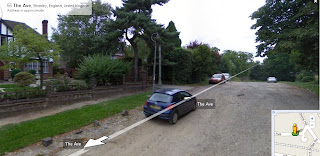I'm just picking things up again after a sizeable break, mainly due to work and awful weather!!
The weather is still awful but fortunately work has relented a little bit.
I am in the process of setting up a website to house all things stinky pipe - following on from the aborted attempt about a year ago. I also have a MASSIVE database of stinkpipes I need to add to the map - it will probably take all year. Will also try to visit as many of those stinkpipes as I cna through the year - and add to the database as I go along. I will also look for a way to publish the database on the net so all stinkpipe fans can get stuck in too.
Also have a backlog of correspondence to get through - I thank you for your patience - all input is deeply appreciated and will be acknowledged. Eventually.
The blog will keep rolling on for the forseeable future as I find it useful to mark my sporadic progress and to show fairly instantly, anything new or interesting I discover.
I will also be looking for way of embedding my interactive map - I have no flipping idea how to do it. Previous attempts have all failed!
The weather is still awful but fortunately work has relented a little bit.
I am in the process of setting up a website to house all things stinky pipe - following on from the aborted attempt about a year ago. I also have a MASSIVE database of stinkpipes I need to add to the map - it will probably take all year. Will also try to visit as many of those stinkpipes as I cna through the year - and add to the database as I go along. I will also look for a way to publish the database on the net so all stinkpipe fans can get stuck in too.
Also have a backlog of correspondence to get through - I thank you for your patience - all input is deeply appreciated and will be acknowledged. Eventually.
The blog will keep rolling on for the forseeable future as I find it useful to mark my sporadic progress and to show fairly instantly, anything new or interesting I discover.
I will also be looking for way of embedding my interactive map - I have no flipping idea how to do it. Previous attempts have all failed!




















































